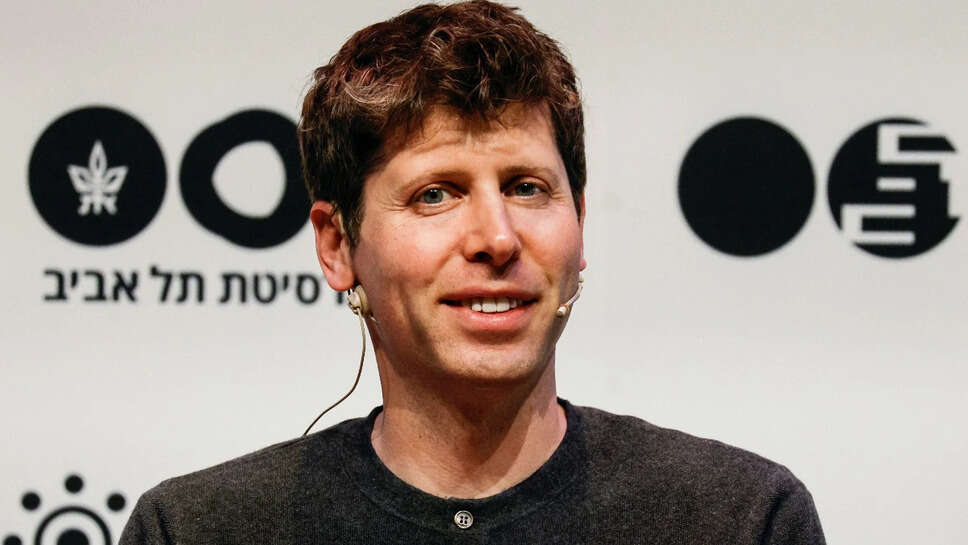OpenAI’s GPT-5 Redefines Human-Machine Synergy, Says CEO Sam Altman

In a moment hailed as one of the most significant leaps in artificial intelligence to date, OpenAI CEO Sam Altman unveiled GPT-5, the latest iteration of the company’s generative language model, with a bold and history-making claim: “One person has never been able to do more in history than they can now.”
The statement, made during a globally streamed launch event in San Francisco, reflected both the technological power of GPT-5 and the philosophical shift it signals in how humans interact with machines. Building upon the capabilities of GPT-4 and GPT-4o, GPT-5 promises faster reasoning, deeper contextual understanding, enhanced memory, and a staggering ability to automate, assist, and even collaborate on a human level.
From Assistant to Collaborator
“This isn’t just a tool,” Altman said during the presentation. “It’s a partner. GPT-5 doesn’t just understand what you say—it understands what you mean, where you’re going, and how to get you there better than you ever imagined.”
GPT-5 now includes real-time adaptive memory, cross-modal understanding (text, voice, vision, code, and data), and the ability to integrate seamlessly into both personal and enterprise ecosystems. Users can ask it to draft books, build apps, compose music, analyze massive datasets, or simulate conversations across thousands of personas, dialects, or emotional states.
Altman emphasized that GPT-5 is not simply an improvement on GPT-4, but a leap into a fundamentally new category of intelligence—one where a single individual, armed with a laptop and GPT-5, can achieve what previously required entire teams, months of planning, and deep technical specialization.
What’s New in GPT-5?
Key features of GPT-5 include:
-
Persistent Long-Term Memory: GPT-5 can remember user context, goals, projects, and preferences across sessions—even months apart—allowing for an ongoing relationship with users.
-
Fully Multimodal Interaction: It can process and generate responses using text, audio, video, code, charts, and real-world sensor data simultaneously.
-
Self-Initiated Suggestions: GPT-5 doesn’t just wait for input—it can proactively offer improvements, reminders, or warnings in context.
-
Emotional Intelligence Tuning: The model can be emotionally adaptive, recognizing tone and intent in real-time and adjusting its responses accordingly.
-
Tool Use and Autonomy: GPT-5 can autonomously use external tools, write and execute code, interact with web APIs, manipulate spreadsheets, or operate other apps on behalf of users.
-
Custom AI Agents: Users can spawn specialized sub-agents that collaborate or handle tasks in parallel.
For the average person, Altman argued, this could mean the capacity to launch a business, write and publish a novel, run complex financial models, or manage legal processes—all without requiring external services.
A New Kind of Power
“One person can now do the work of 10. Or 100,” Altman remarked. “For the first time, a college student can outpace a corporate R&D department. A small business can build enterprise-level software. A teenager can launch a startup over a weekend. This is what we mean when we say history has changed.”
The implications of this shift are enormous. In sectors like law, medicine, education, and design, GPT-5 is already being tested to co-draft contracts, recommend treatments, tutor students in real-time, and redesign interfaces from scratch. The accessibility of GPT-5 through both ChatGPT and API integrations ensures that developers, educators, creators, and even hobbyists can harness its power with minimal technical overhead.
OpenAI also announced enhanced developer tools and enterprise solutions, including a customizable AI framework that allows companies to fine-tune GPT-5 on their proprietary data while maintaining compliance with privacy and security standards.
Guardrails and Governance
Acknowledging the risks of giving such a powerful tool to individuals, Altman emphasized OpenAI’s commitment to safety and governance.
“We’re aware that this is not just a tool for good—it’s power, pure and simple. And power must be paired with responsibility,” he said.
GPT-5 includes stronger content filters, real-time alignment systems, bias-mitigation protocols, and a human-feedback engine to ensure the AI behaves ethically and transparently. OpenAI has also expanded its Red Teaming Alliance, inviting ethicists, legal experts, civil rights advocates, and developers to audit and stress-test the model across a wide range of scenarios.
A new “Responsibility Dashboard” will also be rolled out, allowing organizations to monitor AI usage, flag anomalies, and audit interactions for compliance and accountability.
Reactions and Controversy
The unveiling has sparked both awe and anxiety. Tech leaders from Google, Microsoft, and Meta praised GPT-5’s capabilities, with Microsoft CEO Satya Nadella calling it “a turning point in AI-human collaboration.”
However, critics warn that the growing concentration of AI power in the hands of a few corporations poses significant risks to labor markets, misinformation, surveillance, and democratic processes.
“I worry that we’re moving too fast without clear guardrails,” said an AI ethics researcher at MIT. “A world where a single person can do the work of 100 sounds empowering, but it also means 99 people might find themselves displaced.”
Educators expressed concern about academic integrity, as GPT-5’s ability to write, think, and reason makes detecting AI-generated assignments nearly impossible. In response, OpenAI says it is working on watermarking tools and detection APIs to help institutions verify AI use in sensitive environments.
Human-AI Synergy, Not Supremacy
Despite the disruptive potential, Altman struck an optimistic tone about the future.
“This is not about machines replacing us. It’s about machines helping us realize more of what we’re capable of,” he said. “GPT-5 doesn’t eliminate the artist—it gives them infinite brushes. It doesn’t replace the teacher—it becomes the assistant every teacher wishes they had. And for the dreamers, builders, and inventors of tomorrow—it is the wind at their backs.”
He concluded the event with a reflection that framed GPT-5 as part of a broader human journey:
“In the end, intelligence—real intelligence—is not just about solving problems. It’s about understanding people, helping them, elevating their lives. That’s what we built GPT-5 to do. And we’re just getting started.”
As GPT-5 rolls out to users worldwide, the world enters a new chapter—one where the boundaries between human ambition and machine capability blur, and where the next breakthrough might not come from a billion-dollar lab, but from a single person with an idea and an AI partner.
